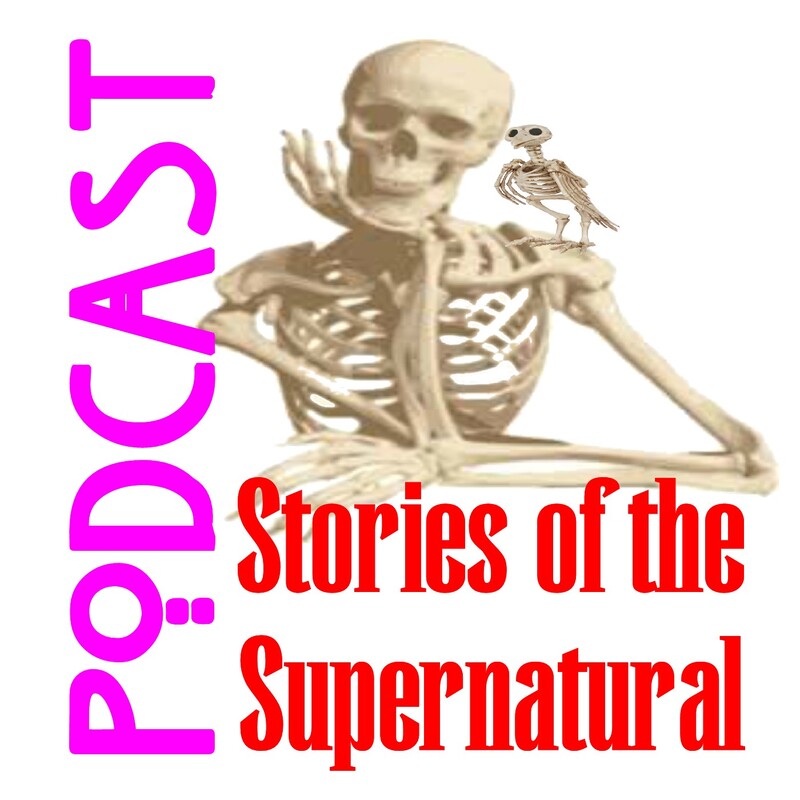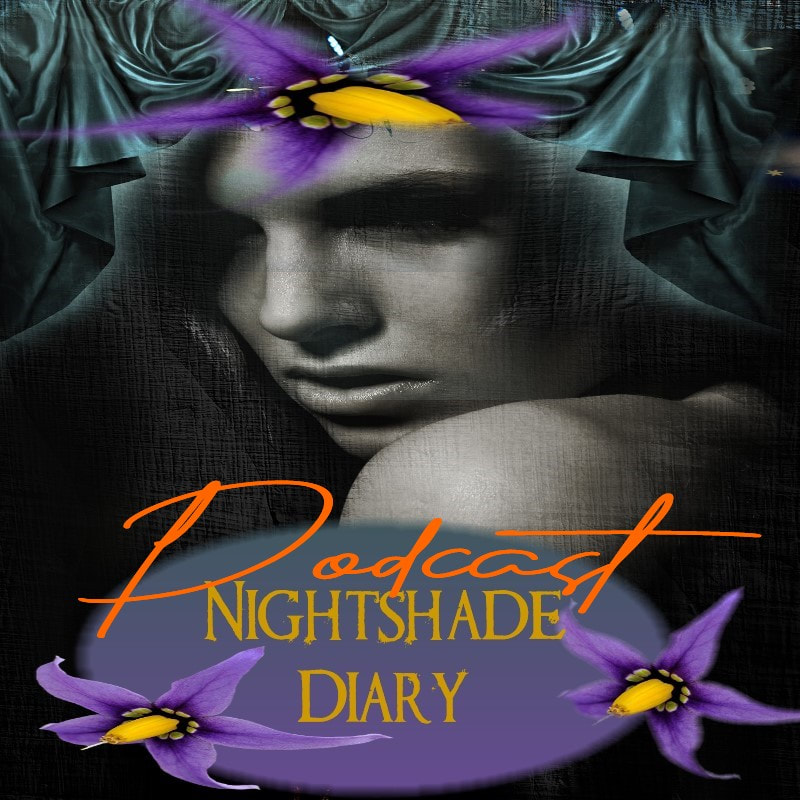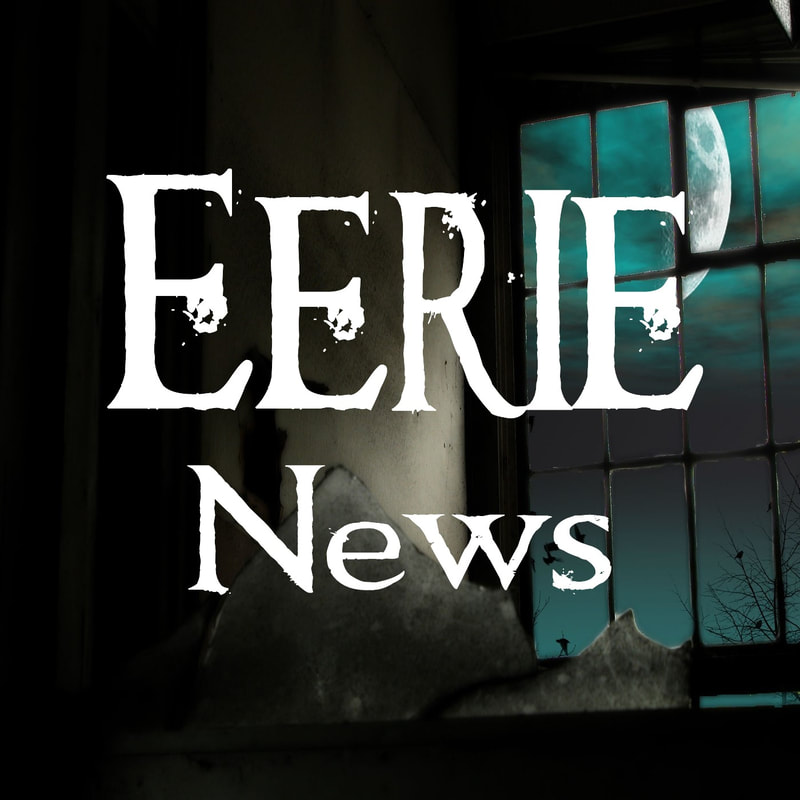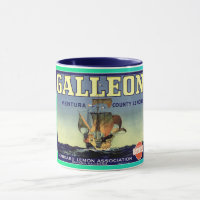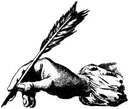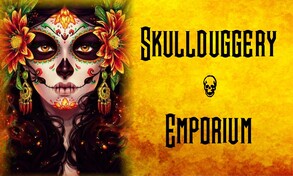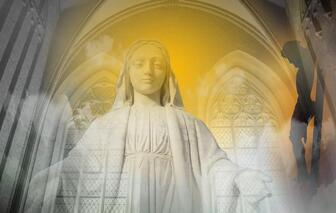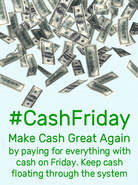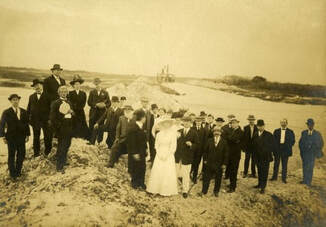
By M.P. Pellicer | Stranger Than Fiction Stories
Bones were found on the bank of the Miami Canal on April 12, 1917. The police immediately compared the crime to the murder of Eddy Kinsey, whose body had been discovered in similar circumstances a few months before. 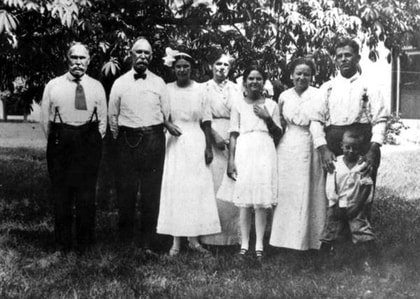 Dade County deputy sheriff and jailer Wilbur W. Hendrickson Sr. with family members c.1913 Dade County deputy sheriff and jailer Wilbur W. Hendrickson Sr. with family members c.1913
What was left of the man was only a skeleton, with evidence that he was the victim of foul play. The bones were taken to Undertaker W.H. Combs. From the general appearance, the remains had been left on this lonely spot for about six months. It had been scattered by buzzards, which had cleaned away the flesh and only traces of garments were left behind. There was also a pair of tan shoes hardly used, which later were proven to have been purchased at an Avenue D shop. A burned buckle showed that he wore a leather belt around his waist.
The examination of the remains indicated the man was struck in the head, and there was a hole on the left side of the skull. He was probably killed someplace else and left on a lonely, small hammock about 100 feet from the canal bank. Mulch was spread on top of him, and then it was burned. It seemed the perpetrators were in a hurry to dispose of their victim, and placed the body on the opposite side of the canal. It probably would have been years before the remains were discovered, if it wasn’t that a work gang run by Frank Hardee came across it. They were building the roadway along the north bank of the canal. The men burned off the little piece of hammock in order to extend the road through, when they came across the gruesome discovery. The coroner's jury rendered a verdict that he came to his death by a blow on the head from a sharp instrument by parties unknown. Two cameo cuff buttons were among the clues being used to establish his identity. 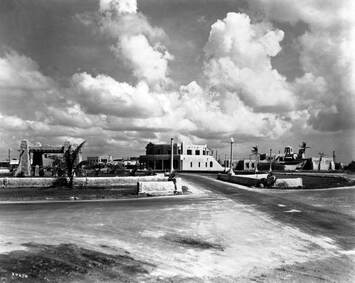 Bridge over Miami Canal - Hialeah c.1927 Bridge over Miami Canal - Hialeah c.1927
Deputy Sheriff Frank McDade and his staff believed the murdered man was none other than Olsen "Dutch" Allison. He was a fisherman who had been missing since October, 1916 when he was subpoenaed as a witness in a blind tiger case, which was another word for a speakeasy.
He had been a resident of the city for several years and was employed by the Cassell Fish Company. Allison was last seen by M.L. Lewis, and at that time he was dressed in a good suit of clothes and spoke of his intentions to leave the city on a boat that he was to have joined in Key West. The last police had seen of Allison was when he was locked up with another man, and was released under $100 bail as a material witness. However he never responded when the case was called, and the bond was declared forfeited. Since then Allison had not been seen in the city. Soon after the discovery, friends of Allison expressed a belief that the body discovered in April was him, contrary to other stories about him being alive in another city. 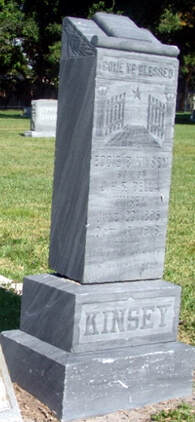 Eddie Kinsey (1895-1916) tombstone Eddie Kinsey (1895-1916) tombstone
After 72 hours of the discovery of the body, the supposed dead man was found to very much alive. According to D. S. Jones, Allison was at Mobile, Alabama and had written to him asking for money. The sheriff had heard of other rumors, but had no definite source for them.
However no one ever actually saw Allison alive again. Rumors and hearsay from friends that he was alive were not definitive proof. In the meantime, the unidentified body found at the canal was displayed at Combs' morgue, and no one could venture any clue to the identity of the man. The coroner and a doctor placed the bones in their natural position and estimated he was about 5'6" and based on his teeth, they estimated his age to be 30 to 40. The identity of the body would remain unknown, and it perhaps was Allison after all, however he was destined to be buried in unnamed grave. The six months it was estimated the body had lain there, coincided with the discovery of Eddy Kinsey’s body on the bank of the same canal on October, 14, 1916. It could be estimated they were killed within days of each other. Kinsey was horribly beaten, thrown overboard and was in the act of crawling out on the canal bank when he was shot multiple times. It could be no coincidence that both of them were to be witnesses against the illegal liquor business being run out of Miami's tenderloin area known as Hardieville. 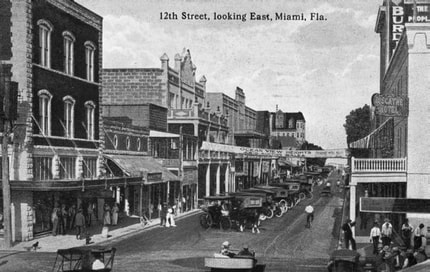 12th Street looking east - Miami c. 1918 12th Street looking east - Miami c. 1918
Dade became a dry county on January, 1914, six years before Prohibition became the law of the land across the United States. All the liquor licenses issued before this date became invalid. It seemed this was the catalyst for all the skulduggery occurring in Hardieville.
On April 21, 1917 there was a development around the murder mysteries, when a raid was made on a downtown blind tiger operation. It turned out that an attempt was made on another sheriff's witness who knew about the speakeasies. The witness had given information about illicit sale of liquor on Avenue D near 13th Street. This address might have been close or the actual site of what would become Miami oldest dive bar, known as Tobacco Road. According to the county's property appraiser, there wasn’t a building at 1812 Avenue D until 1916. During its 100-plus history it would be a speakeasy (posing as a bakery), gambling den, gay bar, strip joint and blues bar. It closed in 2014, and the building was demolished. This latest witness was struck on the head, and carried to the foot of Second Street and the bay, where he was placed unconscious in a boat. A sudden appearance of a stranger saved his life. The man was found with his head hanging over the edge of the boat, while his assailants fled in a carriage. He was taken to a doctor where when he regained consciousness, and said he could identify who attacked him. It seemed that witnesses for the police were on a hit list. The discovery of the man's body in April, heightened the pressure on the police. It all centered on Hardieville a thriving red-light district, which emerged in the northwest sector of Miami, and the murder of Eddie Kinsey. Jasper Kinsey identified the body of his son Eddie from photographs. It turned out an Officer Starling was using him to get information on which bootleggers to arrest. Willy Kinsey, Eddie's brother, testified that he was in Miami the night of the murder and stayed at the Green Tree Inn. Eddie told him he was going to the Hardieville section to keep an appointment, and that he would return soon and spend the night at the hotel. Willie never saw his 20-year-old brother alive again. He was discovered by fisherman lying on the south bank of the Miami Canal with his legs in the water, and one hand stretched over the bank. His shirt was torn from his body, indicating he might have fought for his life. His dark trousers were also torn and spattered with blood from his wounds. Inside a pocket they found a letter from his mother warning against bad company and drink. He had no money. Near the body were prints of automobile wheels. Dr. Jaudon who examined the body said he had never seen a man who had been so brutally beaten. He said it was done with a heavy instrument possibly a monkey wrench, and that his head was almost beaten to a pulp. It was believed he was insensate when thrown in the water, which revived him, and when he tried to climb out of the canal he was shot. One bullet struck him in the back of the head and came out his throat. Another struck him under the left shoulder and ranged down through his stomach, and the others struck him in the arms. He was shot by a high powered gun, and a bullet from a .38 caliber revolver was found at the scene.  The case of Eddie Kinsey's murder reached the governor's ears because it remained unsolved c.1916-1918 (Source - The Miami Herald) The case of Eddie Kinsey's murder reached the governor's ears because it remained unsolved c.1916-1918 (Source - The Miami Herald)
At the inquest when it came to motive, it was ascertained that Kinsey was much disliked by a number of people who frequented Hardieville, on account of his assistance to police in raiding blind tigers. Many of the chauffeurs who worked the Hardieville area opined that Kinsey "was in Dutch" with many of the prostitutes.
Kinsey had formerly operated a hacking car between Ft. Lauderdale and Miami. His father had taken away his car and given it to another brother, because of his heavy involvement with Frieda Manuel a prostitute. Initially four people were arrested in connection to the crime as witnesses. They were Marion Ogle, Jack Arnold, Joe Schacht and Frieda Manuel. It wasn't until April, six months after Eddie Kinsey's murder that William Shields, who by now had lost his job as a policeman, was charged with the murder. The crime was sworn out by Joe Schacht an automobile driver who was twice arrested in connection with the murder himself, but who was released on each occasion. He accused Lieutenant William Shields and Mack Starling as participants in the murder of Kinsey. Previous to this Starling had been arrested for selling liquor. The case reached epic proportion when two weeks later, the discovery of the unidentified man was found at the canal, and the connection was made between the two crimes. Shields hired Judge George A. Worley as his counsel. A spiritualist medium was summoned as a witness and rumors were that a "trumpet meetings" might be rehearsed at the trial. More than 70 witnesses were summoned for the hearing. Needless to say it was a packed courtroom every day of the trial. 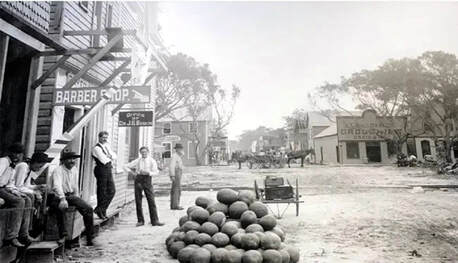 Avenue D, Miami c.1896 Avenue D, Miami c.1896
On April 25, 1917 Shields provided an alibi for his whereabouts when Eddy Kinsey was murdered. The prosecution wanted to prove his alibi was for another night, and not the night when Kinsey was murdered.
The first witness was Policeman F.M. McDade who arrested Dick Welch the night before the murder. He stated Welch had showed fight during the arrest and he was obliged to hit him on the head with the butt end of his pistol. He put Welch in the police car and was on the way to the station, when stopped at the Dixie Highway garage to get gasoline. They dressed Welch's wound at Sawyer's Drug Store, but he was bloody and had to be held in the car by Officer Hart and another man, who was in the back seat. Officer Hart was called to testify and he upheld the story told by McDade. The testimony of these two men exploded the "murder car" theory, which was that Kinsey's body was taken from Hardieville in an automobile that stopped at the Dixie Highway garage for gasoline, enroute to the canal where his body was dumped. Shields testified that he heard rumors they were going to try to "get him", and that he had been warned not to go to Hardieville that night because there were plans to kill him. He said that Frieda Emmanuel a habitue, a euphemism for prostitute had warned him. He denied accepting graft while on the force. H.B. Doane the night desk sergeant, testified that Shields was asleep in the police station from 2 until 6 in the morning of the murder. George Attam a proprietor of a Greek restaurant in which Kinsey was seen shortly before the murder, was the last witness called to testify. He denied he had seen Kinsey that night, however he was possessed of a poor memory, and all he remembered was going to bed that night about 1:30a.m. Kinsey's coat was left in the restaurant, and that Mike one of his employees told him he gave Kinsey the coat back. 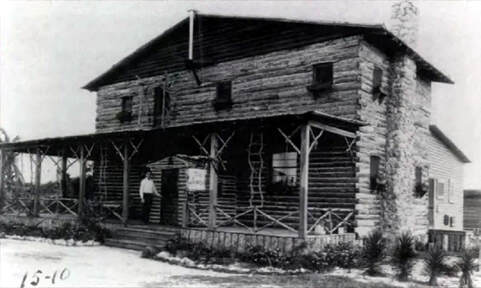 Jungle Inn one of the first speakeasies in Miami Beach c.1921 Jungle Inn one of the first speakeasies in Miami Beach c.1921
A witness for the prosecution was Mrs. A.J. Higgins a spiritualist medium who failed to state anything, which would show complicity on the part of Shields in the murder of Eddie Kinsey. It was noted by the newspapers that for a medium she possessed an unusually poor memory, and what fact she did remember were dragged from her by persistent questioning.
She testified that Shields had come to her twice for a "sitting". Once he was accompanied by Frank McDade. When asked if she knew Frieda Manuel (real name Frieda Emmanuel), who worked in Hardieville, she said no. Shields later testified that he met Kinsey eight months before. He was approached by Kinsey while on patrol in Hardieville with a report of a policeman drunk in one of the resorts, and Shields was sent to investigate. He took a pair of handcuffs off of Kinsey, who said they belonged to a man in Ft Lauderdale. Shields said he had seen Kinsey several times, riding around with the hackmen or buying whiskey until his funds were gone. Then he would return to Lauderdale and get more money from his family. He spent part of his time in Lauderdale and another part in Hardieville. 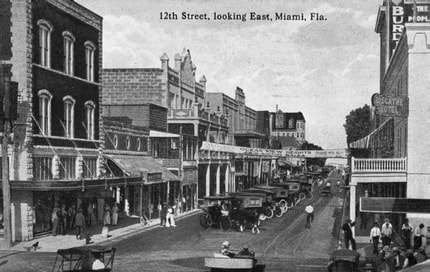
On the night of the murder according to the testimony, Shields got in a hack driven by C.F. "Dad" Miller and rode to Hardieville. It stopped in front of Carrie Ryan's brothel. There Shields met patrolman M.C. Hart. From there they got into an automobile, and sat talking for about 40 minutes. Officer Hart substantiated this version.
Shields admitted seeing Kinsey as he passed the Greek restaurant on the way to a drugstore at Fifth Street and Avenue D. He had responded to the drugstore because there had been a stabbing on the premises. From there Shields returned to the police station where he stayed from 2 to 6 a.m. Eventually it came to light that Kinsey had been seen in Beckwith Hewitt's auto when it stopped at the Dixie Highway garage. According to Walter Magee an employee of the garage, the other men in the car were Red Rhine and others "who were accompanied by a man who was bleeding from the mouth, nose and ears and was struggling with his necktie which was drawn tightly about his neck." Magee when asked about the injured man, was told that Beckwith's brother had beaten him, and they were taking him to a physician. Beckwith confirmed the man in the car had gotten into a fight with his brother. Supposedly the injured man was Mose Howard. Another witness was Frieda Emmanuel who was said to have been infatuated with Kinsey, and to know considerable about the crime. The cause of Kinsey's murder was believed to be his activity in connection with raids on "blind tigers." 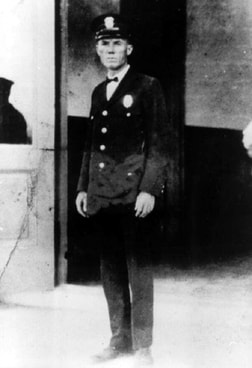 Miami police officer Sidney Clarence Crews c.1921. He was killed by an inmate in 1929 Miami police officer Sidney Clarence Crews c.1921. He was killed by an inmate in 1929
On April 26, 1917 Shields was discharged and many believed that the murderer of Kinsey, and the other man would never be found.
The governor instructed the Kinsey case should be further investigated, as most of it reflected on the illegal liquor trade and vice occurring in Hardieville. By June, 1917 two prostitutes Pauline Ballard and Anna Brice along with Joe Schacht and Beckwith Hewitt, were all indicted in connection to the murder of Eddie Kinsey. A month later there was still no progress in producing the actual murderers of Eddie Kinsey. There was so much pressure related to the case, that Chief of Police W.J. Whitman was considering an early retirement because of it. By January 1918, two new indictments were issued in the Kinsey case. One was for Joseph L. Arnold formerly a chauffeur, who at the time of the indictment was a sergeant in the aviation service of the United States army at a camp near Augusta, Georgia, and Jack Attam a Syrian fruit dealer. Both were charged with murder in the first degree. Jack Attan formerly conducted a soft drink place in Hardieville, and was driving a jitney when he was arrested. There was once a rumor that Kinsey had been kidnapped and killed by a group of Syrians, who were hired to do away with him. However this was one of many rumors that surrounded this murder. In February 1918, Joe Schacht was acquitted, mostly due to the disappearance of a minister by the surname of Anderson who was to appear as a witness. Beckwith Hewitt had his indictment nolled. There were rumors that both of them had asked to be inducted into the armed services at once. Hewitt did go on to serve, and it’s unknown if Schacht did so. The death of Eddie Kinsey remained unsolved, also who killed Olsen "Dutch" Allison if that was indeed his body, and who tried to kill the police's third witness. Hardieville was a dangerous place, and there were plenty who would kill to make sure business stayed the same as usual. Was it the cops who were using these men as informants, but were they really informing on their competition? Was it the owners of these illicit speakeasies who took care of snitches? A hundred years later all who could shed light on these answers took them to the grave.
0 Comments
Your comment will be posted after it is approved.
Leave a Reply. |
Stranger Than Fiction StoriesM.P. PellicerAuthor, Narrator and Producer Archives
July 2024
Categories
All
|
Stories of the Supernatural
- Stories of the Supernatural
- Miami Ghost Chronicles
- M.P. Pellicer | Author
- Stranger Than Fiction Stories
- Eerie News
- Supernatural Storytime
-
Astrology Today
- Tarot
- Horoscope
- Zodiac
-
Haunted Places
- Animal Hauntings
- Belleview Biltmore Hotel
- Bobby Mackey's Honky Tonk
- Brookdale Lodge
- Chacachacare Island
- Coral Castle
- Drayton Hall Plantation
- Jonathan Dickinson State Park
- Kreischer Mansion
- Miami Biltmore Hotel
- Miami Forgotten Properties
- Myrtles Plantation
- Pinewood Cemetery
- Rolling Hills Asylum
- St. Ann's Retreat
- Stranahan Cromartie House
- The Devil Tree
- Trans-Allegheny Lunatic Asylum
- West Virginia Penitentiary
- Paranormal Podcasts
"When misguided public opinion honors what is despicable and despises what is honorable, punishes virtue and rewards vice, encourages what is harmful and discourages what is useful, applauds falsehood and smothers truth under indifference or insult, a nation turns its back on progress and can be restored only by the terrible lessons of catastrophe."
- Frederic Bastiat
- Frederic Bastiat

Copyright © 2009-2024 Eleventh Hour LLC. All Rights Reserved ®
DISCLAIMER
DISCLAIMER
 RSS Feed
RSS Feed

